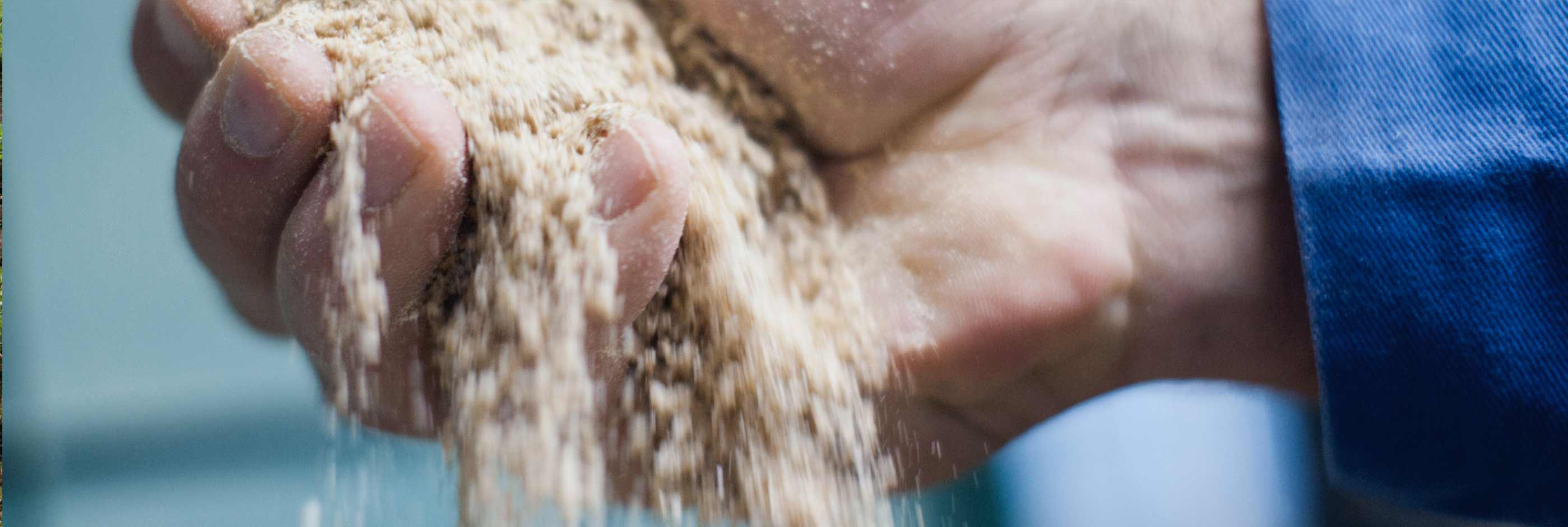All-Veg Broiler Feed Cost Optimization with HP AviStart
Article by Hamlet Protein
Protein yielding feed ingredients are the second largest component and one of the most costly components in broiler diets. Soybean meal (SBM) is considered to be the preferred vegetable protein ingredient due to its highly digestible amino acid profile, as well as it’s more favorable energy and crude fiber content compared to other oilseed meals (Willis 2003). However, when included into diets at high amounts (>30%), SBM contributes multiple anti-nutritional factors (ANF) at a considerable level that can have a detrimental effect on the development and growth of broilers resulting in reductions of performance and feed efficiency.
To alleviate the negative effects of soy ANFs, one nutritional strategy is to include non-SBM protein alternatives at the expense of SBM. Alternative protein ingredients can be derived from both animal and vegetable sources. Porcine meat and bone meal (MBM), corn gluten meal (CGM), and distillers’ dried grains with solubles (DDGS) are alternative options that have been used in dietary formulations for multiple reasons such as the availability of other key nutrients (minerals or energy) or potential cost savings. However, these alternatives can present concerns of their own as they are often variable in nutritional content, can present imbalanced AA profiles, and can produce enteric disruptions (Corzo et al., 2010; Kim et al., 2012; Beski et al., 2015; Visscher et al., 2017).
This article presents the results of an experimental trial with broiler chickens fed diets supplemented with different alternative protein sources (Steed et al., 2020). These results highlight the benefits of a high-quality soy protein ingredient in young broiler diets and confirm the advantages of HP AviStart compared to other vegetable protein ingredients.
Comparative analysis of HP Avistart and non-SBM protein alternatives
680 one-day-old male Ross 708 broiler chicks were utilized in this study and fed one of four dietary treatments: Treatment 1) corn-SBM + 5% HP AviStart (0-14 days), 0% HP AviStart (14-42 days); Treatment 2) corn-SBM + 3% CGM (0-42 days); Treatment 3) corn-SBM + 3% DDGS (0-42 days); Treatment 4) corn-SBM + 3% MBM+ (0-42 days). A treatment effect was observed on BWG during the grower phase (14-35 days) and cumulatively through 35 and 42 days (Figure 1). The inclusion of HP Avistart significantly increased BWG compared to CGM and led to numerical increases in BWG compared to DDGS. At the conclusion of the trial (42 days) a treatment effect was also observed on FI (Figure 2). Similar to BWG, the inclusion of HP Avistart significantly increased FI compared to CGM and led to numerical increases in FI compared to DDGS.
Alternative protein source had a significant effect on FCR during the grower phase (14-35 day) and cumulatively through 35 days (Figure 3). A carry-over effect of including 5% HP AviStart in only the starter diet led to numerical reductions in FCR compared to other vegetable protein alternatives improving it to levels similar of MBM. At the conclusion of the trial a similar trend was observed (p=0.09) where 5% HP AviStart in only the starter diet led to numerical reductions in FCR compared to 3% of CGM and DDGS fed during the entire trial. A treatment effect was also observed on mortality adjusted FCR in the grower phase where the inclusion of HP AviStart in the starter diet significantly improved FCR compared to CGM fed in both starter and grower diets. The inclusion of HP AviStart resulted in equally as good growth performance as MBM evident by no significant differences observed in BWG, FI, or FCR compared to MBM during individual growth phases or at the conclusion of the trial (Figures 1-3). Though not significant, numerical differences were observed in uniformity where broilers fed HP Avistart had a lower CV than those fed MBM, CGM, or DDGS (Figure 4). Return on investment (ROI) analysis (cost and performance) was evaluated for HP AviStart at the conclusion of the trial and resulted in returns of -15.18, 35.07, and 3.34 compared to MBM, CGM, and DDGS, respectively.
In summary, the inclusion of HP AviStart in only the starter diet (0-14 days) resulted in performance equal to or better than the inclusion of MBM, CGM, or DDGS for the entire growout period (0-42 days). Return on investment analysis of including 5% HP AviStart in the starter period (0-14 days) compared to 3% MBM, CGM, and DDGS fed the entire trial confirmed HP AviStart to have the greatest return of vegetable protein alternatives in broiler diets.

Figure 1. Body weight gain (BWG, kg) of broilers fed diets with the inclusion of different alternative protein sources. Data with different labels represent significant difference (p≤0.05).

Figure 2. Feed Intake (FI, kg/bird/day) of broilers fed diets with the inclusion of different alternative protein sources. Data with different labels represent significant difference (p≤0.05).

Figure 3. Feed conversion ratio (FCR) of broilers fed diets with the inclusion of different alternative protein sources. Data with different labels represent significant difference (p≤0.05).

Figure 4. Uniformity (CV, %) of broilers fed diets with the inclusion of different alternative protein sources.

